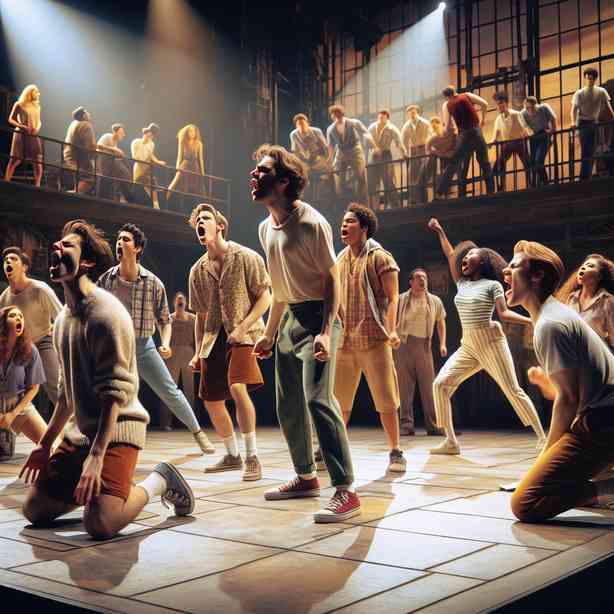
In the world of performing arts, there exists a phenomenon that is often experienced but seldom discussed—sometimes, the rehearsal can surpass the actual performance. This intriguing occurrence brings to light various aspects of creativity, teamwork, and the unpredictability of live performances. In this piece, we will explore the reasons why rehearsals can turn out to be better than the final show, the emotional depth that these moments can offer, and the lessons that artists and audiences alike can learn from such experiences.
Rehearsals are a crucial element in the preparation for any performance. They provide a structured environment where artists can experiment, collaborate, and refine their work. During rehearsals, performers often feel a sense of freedom that may not be present during the actual show. This freedom allows them to explore their characters or pieces in a way that feels genuine and authentic. The pressure of a live audience and the expectation to deliver a flawless performance can sometimes stifle creativity, causing performers to play it too safe.
In a rehearsal setting, artists are often more willing to take risks. They may try out new interpretations of their roles, experiment with different vocal techniques, or explore innovative staging choices. This willingness to experiment fuels creativity, resulting in unexpected moments that can resonate deeply with both the performers and their fellow cast members. When performers throw caution to the wind, it often leads to discoveries that elevate the overall quality of the work being created.
Additionally, the camaraderie that develops during rehearsals plays a significant role in the magic of that process. As performers spend time together, they bond over shared experiences, challenges, and triumphs. This sense of unity fosters an environment where individuals feel supported to express themselves artistically. One can often witness profound moments of connection during rehearsals, where laughter, tears, and insights flow freely. These moments can create a synergy that heightens the emotional stakes of a piece, making it resonate even more intensely than later performances.
However, it’s not just about the creative atmosphere. Technical elements also come into play during rehearsals that can contribute to their success. Often, without the pressure of a live audience, the crew members are able to fine-tune lighting, sound, and set design more effectively. Sometimes, the absence of real-time scrutiny allows for a sharper focus on these foundational elements, which can lead to an overall more polished rehearsal experience. A well-timed light cue, a perfectly executed sound effect, or an exquisitely constructed set can elevate the rehearsal in a way that can’t always be replicated in the final show.
Moreover, rehearsals can bring forth genuine emotional expressions that may not always surface during performances. The moment of preparing for a show is filled with anticipation and anxiety, both for the performers and the audience. This sense of vulnerability encourages performers to connect with their emotional truths, often allowing them to deliver moving performances that can be breathtakingly beautiful. These unfiltered moments are often where true artistry shines, as performers tap into authentic human experiences.
Despite these compelling qualities, one might wonder why the final performance doesn’t always reach the same level of emotional depth or creative bravery. The answer lies partly in the nature of live performances. Every show is a unique encounter between the performers and the audience. Factors such as the audience’s energy, the performers’ mood, and even external influences like technical issues can dramatically alter the dynamics of the performance. On any given night, a performance can be influenced by an infinite number of variables, which may hinder the magic that a rehearsal feels naturally.
Audience expectation also plays a pivotal role in this dynamic. Often, the pressure to meet expectations can stifle the spontaneity that made a rehearsal special. A performer might hold back for fear of not meeting the audience’s preconceived notions of their role or the production itself. As a result, the final performance can sometimes lack the authenticity that characterized rehearsals, where artists felt secure in their creative explorations.
Furthermore, the duality of rehearsal and performance underscores the importance of understanding the artistic process. The difference between the two is not inherently negative as it reflects the multifaceted nature of performance art. Instead, it invites both performers and audiences to appreciate the intricate and unpredictable journey that artistry encompasses. While the final performance may have its own unique merits, it is essential to celebrate the raw energy of rehearsal and the beauty of spontaneity that it often affords.
In retrospect, the moments when rehearsals seem to shine brighter than performances are rich with takeaways for everyone involved in the performing arts. Artists learn to embrace risk, create stronger bonds with one another, and discover the essence of their craft. Audiences, on the other hand, gain a deeper understanding of the complex artistry involved in creating theater, music, or dance.
Ultimately, the exploration of this phenomenon serves as a reminder that the essence of performance lies in the journey rather than the destination. The process of collaborating, experimenting, and discovering through rehearsals often leads to the most profound artistic moments. Whether or not a rehearsal outshines its corresponding performance, each one contributes significantly to the entire artistic narrative. As artists continue to push boundaries, they invite audiences to appreciate every layer of the creative endeavor, and in doing so, cultivate a deeper appreciation for the craft.
In conclusion, the idea that “the rehearsal that was better than the show” speaks to a broader understanding of creativity and collaboration in the performing arts. It challenges traditional notions of success and invites us to reconsider the definitions of excellence and artistry. Both performers and audiences stand to benefit from recognizing the unique qualities that rehearsals can offer. Embracing these moments as valid and valuable aspects of the artistic journey allows for a richer, more nuanced experience of performance art—one that celebrates not just the end result, but the deep, intricate process that brings it to life.


